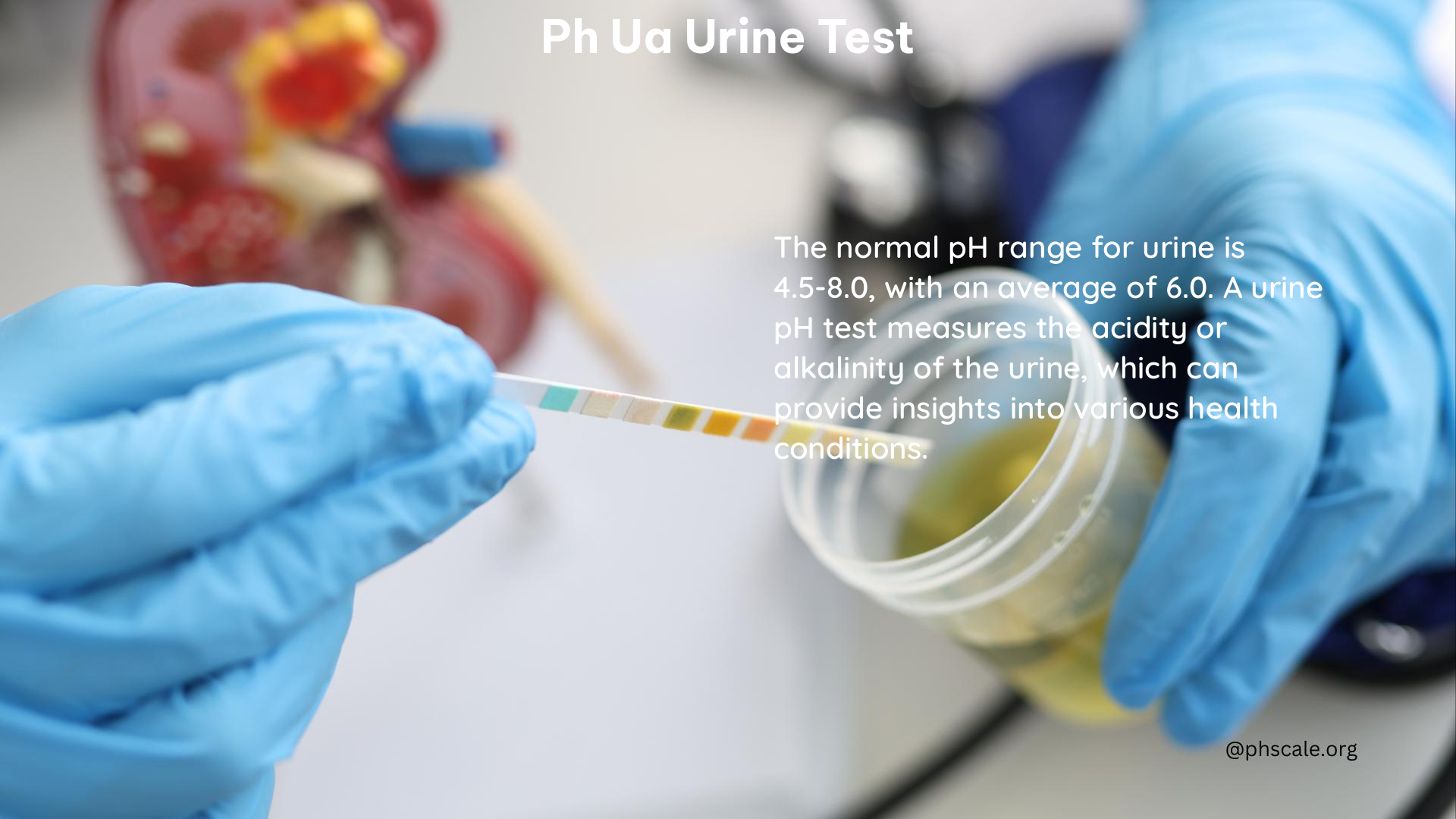The pH UA urine test is a crucial diagnostic tool that measures the acidity or alkalinity of your urine, providing valuable insights into your overall health and well-being. This test is essential for identifying and monitoring various medical conditions, from kidney stones to metabolic disorders. In this comprehensive guide, we’ll explore the intricacies of the pH UA urine test, its normal range, the testing process, and how the results can impact your health.
Normal Range and Interpretation
The normal pH range for urine typically falls between 4.6 and 8.0, with a neutral pH of 7.0. Variations in this range can indicate underlying health issues. A higher pH, indicating alkalinity, may suggest conditions like kidney stones, kidney failure, or urinary tract infections. Conversely, a lower pH, indicating acidity, may point to conditions such as diabetic ketoacidosis, diarrhea, or metabolic acidosis.
The Testing Process

The pH UA urine test is a straightforward procedure that involves collecting a clean-catch urine sample. This sample is then analyzed using a dipstick or litmus paper, which changes color based on the acidity or alkalinity of the urine, providing a visual representation of the pH level.
Preparation and Factors Affecting Urine pH
Before the test, patients may be asked to stop taking certain medications that can influence the results, such as acetazolamide, ammonium chloride, methenamine mandelate, potassium citrate, sodium bicarbonate, and thiazide diuretics. Additionally, a balanced diet for several days prior to the test is recommended, as certain foods and drinks can impact urine pH.
Dietary Influences on Urine pH
Diet plays a significant role in the pH of your urine. A diet high in fruits, vegetables, and non-cheese dairy products can increase urine pH, making it more alkaline. Conversely, a diet high in fish, meat products, and cheese can decrease urine pH, making it more acidic.
Contaminants and Chemicals Affecting Urine pH
Urine pH can also be influenced by various contaminants and chemicals, including medications, food, and drinks, as well as certain medical conditions. It’s essential to be aware of these factors to ensure accurate test results and proper interpretation.
Home Remedies and Balancing Urine pH
To maintain a healthy urine pH balance, consider the following home remedies and lifestyle changes:
- Dietary Adjustments: Eat a balanced diet with a mix of acidic and alkaline foods to help maintain a neutral urine pH.
- Hydration: Drink plenty of water to help flush out excess acids or bases.
- Natural Remedies: Cranberry juice, apple cider vinegar, and certain herbal teas may help balance urine pH, but consult a healthcare professional before making any significant changes.
By understanding the pH UA urine test and the factors that influence urine pH, you can take proactive steps to maintain a healthy acid-base balance in your body and address any underlying health concerns.
References
- Mount Sinai. (2023). Urine pH Test. Retrieved from https://www.mountsinai.org/health-library/tests/urine-ph-test
- Medical News Today. (n.d.). Urine pH: Normal Ranges and What They Mean. Retrieved from https://www.medicalnewstoday.com/articles/323957
- Healthline. (2021). Urine pH Level Test: Purpose, Procedure, Results & More. Retrieved from https://www.healthline.com/health/urine-ph
